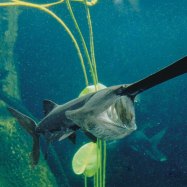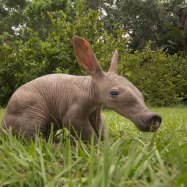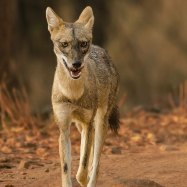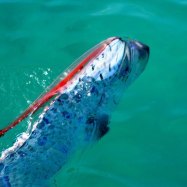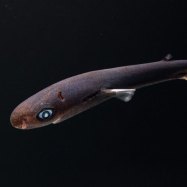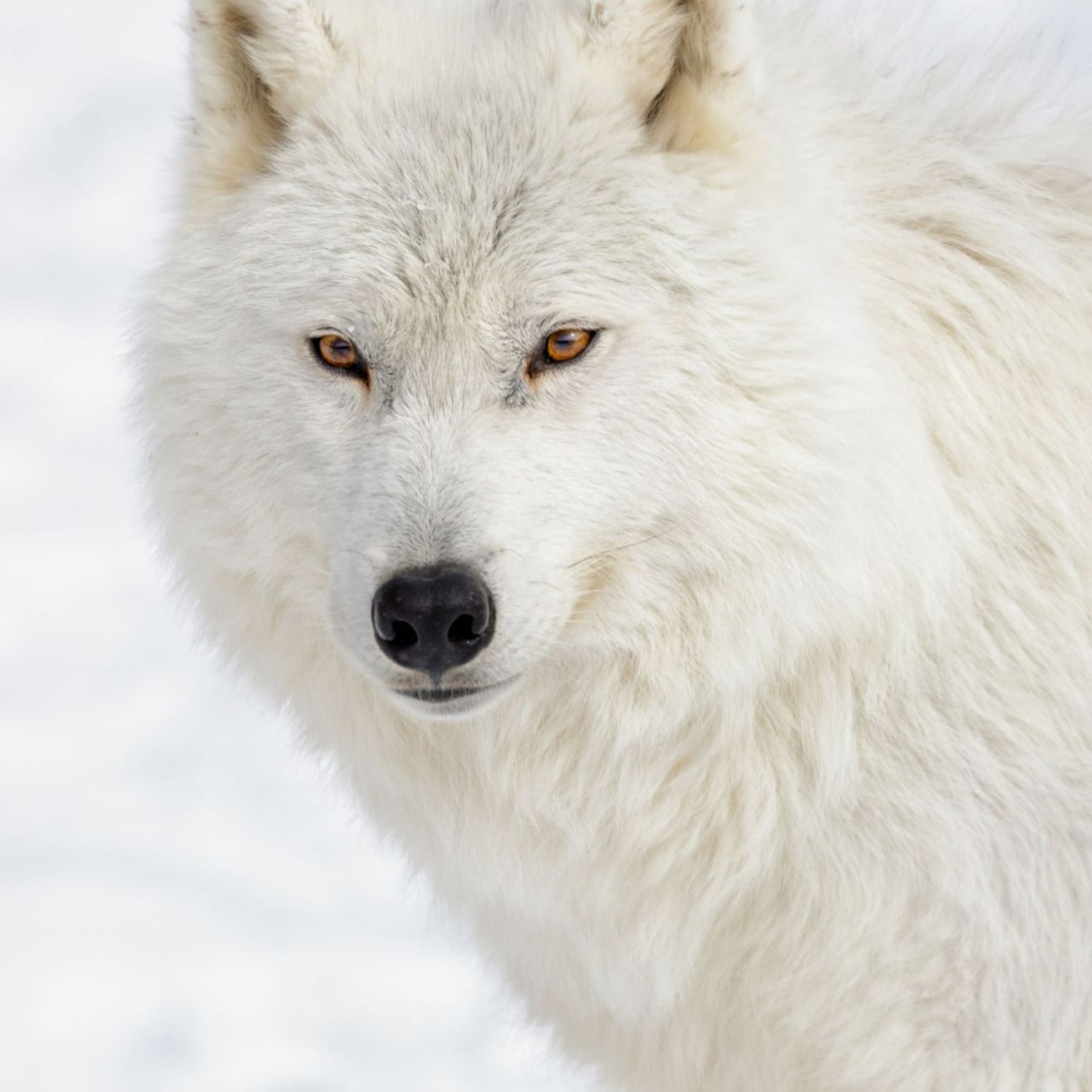
Arctic Wolf
3 to 6.5 feet (including the tail)
The Arctic Wolf, found in the Arctic Circle, is a medium-sized and muscular animal belonging to the Canidae family. With a length of 3 to 6.5 feet (including the tail), this majestic creature is known for its thick white fur, which helps it survive in the harsh Arctic climate. Explore more about this incredible animal and its unique adaptations. #ArcticWolf #Canidae #ArcticCircle #AnimalFacts
Animal Details Summary:
Common Name: Arctic Wolf
Kingdom: Animalia
Habitat: Arctic tundra and coastal regions
The Resilient and Majestic Arctic Wolf: Surviving in the Harshest Environment
The Arctic Circle, a region of extreme cold and unforgiving conditions, is home to a magnificent creature, the Arctic Wolf. This stunning animal, also known as Canis lupus arctos, thrives in one of the most hostile environments on the planet. With its pure white fur and fierce resilience, the Arctic Wolf has captured the hearts and minds of humans for centuries. In this article, we will delve into the remarkable characteristics and behaviors of this highly adaptable creature Arctic Wolf.As the scientific name suggests, the Arctic Wolf is a subspecies of the gray wolf, Canis lupus. However, this particular subspecies has unique adaptations that allow it to survive in the harsh conditions of the Arctic. It is commonly referred to as the white wolf or polar wolf due to its distinct white fur, a feature that sets it apart from its darker-colored counterpart.
The Arctic Wolf belongs to the Animalia kingdom, Phylum Chordata, and Class Mammalia. It falls under the Carnivora order and is a member of the Canidae family, which includes other species such as foxes and domestic dogs. The Arctic Wolf is the largest subspecies of the gray wolf, with males weighing up to 175 pounds, and females weighing up to 120 pounds.
This magnificent creature's home is the vast expanse of the Arctic tundra and coastal regions in North America, Greenland, and Eurasia. Its geographical distribution extends to countries such as Canada, Alaska, Greenland, Norway, and Russia. Unlike other wolves, the Arctic Wolf does not migrate, and its territory is limited to within the Arctic Circle Aesculapian Snake.
One of the most intriguing aspects of the Arctic Wolf's survival is its talent for hunting and feeding. As a highly adaptive creature, it has developed unique feeding methods to thrive in its harsh environment. Being a carnivore, the Arctic Wolf's diet consists mainly of muskox, Arctic hares, caribou, and other small mammals. It is also known to scavenge from the remains of other predator kills, making it an opportunistic feeder.
With the changing seasons and limited food sources in the Arctic, the Arctic Wolf has developed an excellent sense of smell to track prey. It can detect carcasses from several miles away, making it a highly efficient hunter. Despite its ferocious appearance and predatory nature, the Arctic Wolf is a crucial part of the Arctic ecosystem, maintaining a balance between predator and prey populations.
The unique adaptations of the Arctic Wolf are not just limited to its physical characteristics and feeding habits. Its body shape is medium-sized and muscular, giving it the strength and agility to navigate the uneven terrain of the tundra. Its thick white fur acts as a natural insulation, allowing it to withstand temperatures as low as -30 degrees Fahrenheit.
The Arctic Wolf's fur also plays a significant role in its camouflage in the snowy landscape, making it almost invisible to its prey. During the Arctic winter, when the sun does not rise above the horizon for months, the Arctic Wolf's white coat provides the perfect cover for hunting under the moonlit nights. In the summer months, when the snow melts, the Arctic Wolf's fur changes to a greyish-brown, mirroring the colors of the tundra.
The length of an Arctic Wolf can range from 3 to 6.5 feet, including its bushy tail. Its strong legs, covered in fur, help the Arctic Wolf navigate the slippery and icy terrain of the Arctic. Its paws are also padded with thick fur, providing insulation and traction on the frozen ground.
The Arctic Wolf's resilience and adaptability can also be seen in its breeding habits. Due to the harsh conditions of the Arctic, these wolves have developed unique breeding strategies to ensure the survival of their species. Arctic Wolves usually mate for life, and their breeding season is between February and April.
During the breeding season, the female Arctic Wolf digs a den in the snow, where she gives birth to her litter. The den provides protection from the harsh weather and predators. The average litter size consists of 4-7 pups, who are completely helpless at birth. The pups remain in the den for three weeks, cared for by both the parents and older siblings.
As the pups grow, they learn valuable hunting skills from their parents, preparing them for survival in the Arctic. With a harsh environment and limited resources, only the strongest and most adaptable pups survive, ensuring the strength and resilience of the Arctic Wolf population.
The Arctic Wolf has had a tumultuous relationship with humans over the years. In the past, humans hunted these wolves for their fur, leading to a decline in their population. However, with conservation efforts and the ban on wolf hunting, the population has significantly increased. As per the International Union for Conservation of Nature (IUCN), the Arctic Wolf is currently classified as a "Least Concern" species, with a stable population trend.
Despite this, the Arctic Wolf still faces threats to its survival, such as climate change, habitat destruction, and competition for food with other predators such as polar bears. These challenges highlight the need for continuous conservation efforts to protect this magnificent animal and its fragile Arctic habitat.
In recent years, the Arctic Wolf has also become a subject of interest in scientific research, particularly in genetics and evolution. The isolated population of Arctic Wolves in the Arctic Circle has allowed scientists to study and understand their unique adaptations and behavior, shedding light on the process of evolution in animals.
In conclusion, the Arctic Wolf is a resilient and majestic creature that has captivated humans for centuries with its stunning appearance and remarkable adaptation to the harshest environment on the planet. With its fierce hunting skills, camouflage, and breeding strategies, the Arctic Wolf has proven to be a survivor in the ever-changing Arctic landscape.
As we continue to learn more about this fascinating animal, it is imperative to protect its habitat and ensure its survival for future generations. The Arctic Wolf remains a true symbol of strength and resilience in the face of adversity, and it is a reminder that with determination and adaptation, we can thrive in even the most hostile of environments.

Arctic Wolf
Animal Details Arctic Wolf - Scientific Name: Canis lupus arctos
- Category: Animals A
- Scientific Name: Canis lupus arctos
- Common Name: Arctic Wolf
- Kingdom: Animalia
- Phylum: Chordata
- Class: Mammalia
- Order: Carnivora
- Family: Canidae
- Habitat: Arctic tundra and coastal regions
- Feeding Method: Carnivorous
- Geographical Distribution: Arctic regions of North America, Greenland, and Eurasia
- Country of Origin: Canada, Alaska, Greenland, Norway, and Russia
- Location: Arctic Circle
- Animal Coloration: White
- Body Shape: Medium-sized and muscular
- Length: 3 to 6.5 feet (including the tail)

Arctic Wolf
- Adult Size: 2 to 3 feet at the shoulder
- Average Lifespan: 6 to 8 years in the wild, up to 20 years in captivity
- Reproduction: Sexual
- Reproductive Behavior: Monogamous
- Sound or Call: Howling
- Migration Pattern: Some populations migrate
- Social Groups: Packs
- Behavior: Highly social and cooperative
- Threats: Climate change, habitat loss, hunting
- Conservation Status: Least Concern (IUCN)
- Impact on Ecosystem: Regulates prey populations
- Human Use: Tourism, research
- Distinctive Features: Thick white fur, shorter ears and muzzle compared to other wolves
- Interesting Facts: Arctic wolves have smaller ears and shorter muzzles than other wolves to reduce heat loss. They have a strong sense of teamwork and cooperation within their pack, often working together to hunt and raise their young.
- Predator: Polar bears, humans
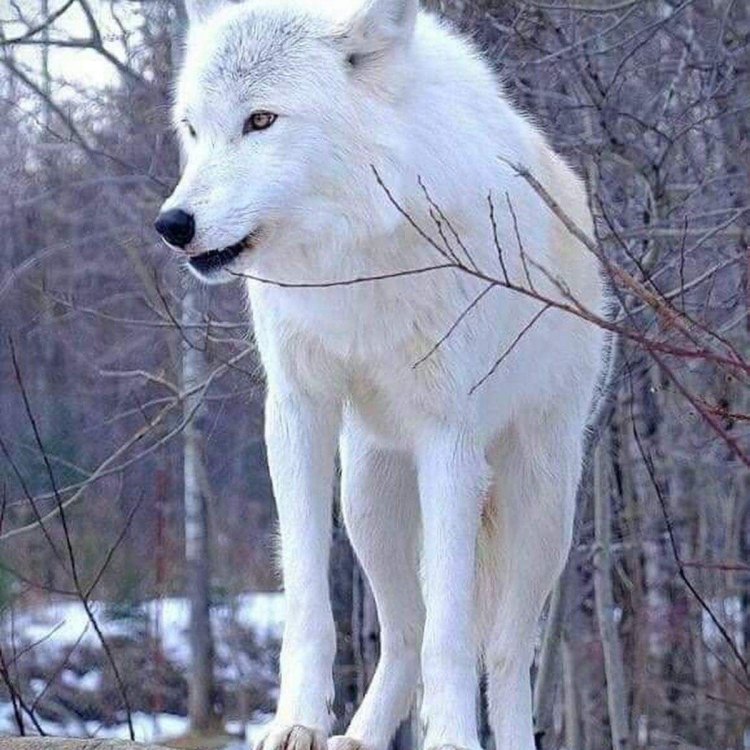
Canis lupus arctos
The Mighty Arctic Wolf: An Icon of the Frozen North
The Arctic wolf, scientific name Canis lupus arctos, is a magnificent and fascinating creature that inhabits some of the coldest and most remote regions on Earth. With its breathtaking white coat and formidable presence, this wolf has captured the imagination of people all over the world. In this article, we will delve into the unique features and behaviors of the Arctic wolf, its impact on the ecosystem, and its relationship with humans.The Arctic wolf is a subspecies of the grey wolf, although its physical characteristics and behavior set it apart from its relatives in the animal kingdom PeaceOfAnimals.Com. This wolf is specially adapted to survive in its harsh and frigid habitat, making it a resilient and impressive species.
Size, Lifespan, and Reproduction
The adult size of an Arctic wolf can range from 2 to 3 feet at the shoulder, with a weight of 70 to 120 pounds. They have thick white fur, which not only provides camouflage in the snowy landscape but also acts as insulation against the extreme cold. This fur is shed in the summer months, revealing a shorter grey and brown coat underneath.In the wild, Arctic wolves have an average lifespan of 6 to 8 years. However, in captivity, they can live up to 20 years. They reach sexual maturity at around 2 to 3 years of age and typically mate between February and June. Arctic wolves are monogamous, meaning they mate with only one partner for life. They also have a strong sense of family and parental care, with both parents participating in raising their young Angled Sunbeam Caterpillar.
Social Behavior and Threats
Arctic wolves are highly social animals and live in packs ranging from 2 to 20 individuals. Within a pack, there is a strict hierarchy, headed by the alpha male and female. They communicate with each other through various vocalizations and body language, including their distinctive howling, which can be heard for miles.These wolves also display a high level of cooperation and teamwork within their pack. This is evident in their hunting tactics, where they work together to take down larger prey such as musk oxen and Arctic hares. Their strong social bonds and cooperative behavior have been the subject of much research and admiration.
Unfortunately, the Arctic wolf is facing several threats that jeopardize its survival. Climate change has had a major impact on their habitat, causing the sea ice to melt and disrupting their hunting and migration patterns. This, combined with habitat loss due to human activity, poses a significant threat to their population.
Conservation Status and Impact on the Ecosystem
Despite these threats, the Arctic wolf is currently classified as "Least Concern" by the International Union for Conservation of Nature (IUCN). This is due to their wide distribution across the Arctic and their ability to adapt to changing conditions. However, this status does not mean that we can become complacent in protecting this magnificent animal.The Arctic wolf plays a crucial role in regulating prey populations in its ecosystem. By controlling the numbers of prey species, they prevent overgrazing and help maintain a balanced ecosystem. These wolves are also an essential part of the food chain, providing a food source for predators such as polar bears and humans.
Human Use and Interesting Facts
The Arctic wolf has been a subject of fascination for humans for centuries, particularly in Inuit and other indigenous cultures. Today, they are a popular tourist attraction in Arctic regions, with visitors hoping to catch a glimpse of these elusive creatures in their natural habitat.In addition, researchers have been studying the Arctic wolf to gain a deeper understanding of its behavior, physiology, and adaptations. This research not only provides valuable insights into the life of this amazing animal but also contributes to our knowledge of the fragile Arctic ecosystem.
The distinctive features of the Arctic wolf, such as its thick white fur and shorter ears and muzzle, are a result of evolution and adaptation to its extreme environment. The smaller ears and muzzle help reduce heat loss, allowing them to conserve energy and stay warm in the harsh climate.
Predators and Coexistence with Humans
The Arctic wolf doesn't have many natural predators, apart from polar bears and sometimes other wolves. However, their biggest threat comes from humans. Although hunting of the Arctic wolf is illegal in most countries, it still occurs, mainly for their fur.Humans also pose a threat to the Arctic wolf's habitat, as well as its prey species. As such, it is crucial that we take steps to protect and conserve this magnificent animal, not only for its sake but also for the health of the Arctic ecosystem.
The Arctic wolf is a symbol of strength, resilience, and adaptation to the challenges of its environment. With its unique features and highly social behavior, it has captured the hearts and minds of people around the world. As we continue to learn more about this incredible animal, let us also strive to protect and preserve it for future generations to appreciate and admire.
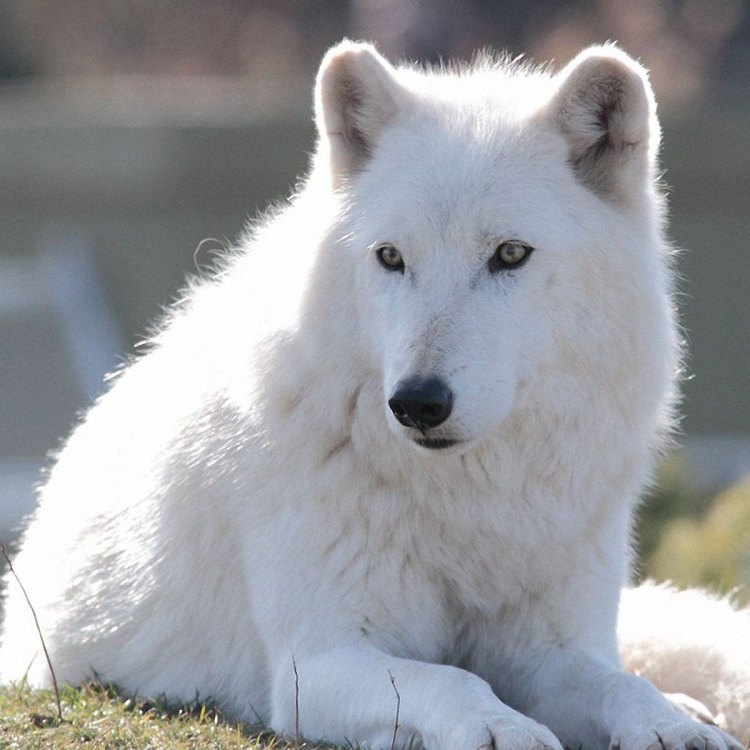
The Resilient and Majestic Arctic Wolf: Surviving in the Harshest Environment
Disclaimer: The content provided is for informational purposes only. We cannot guarantee the accuracy of the information on this page 100%. All information provided here may change without prior notice.


